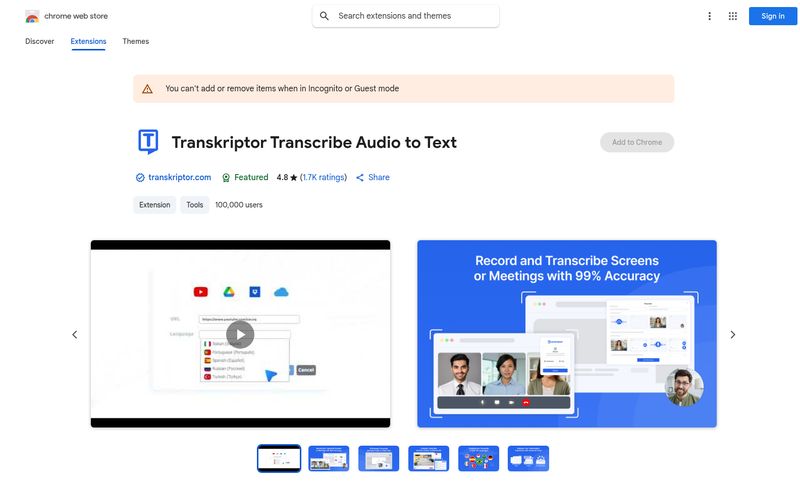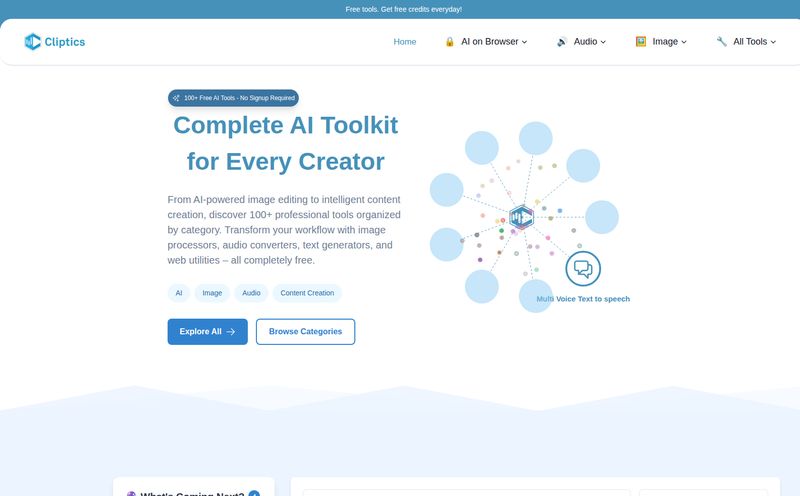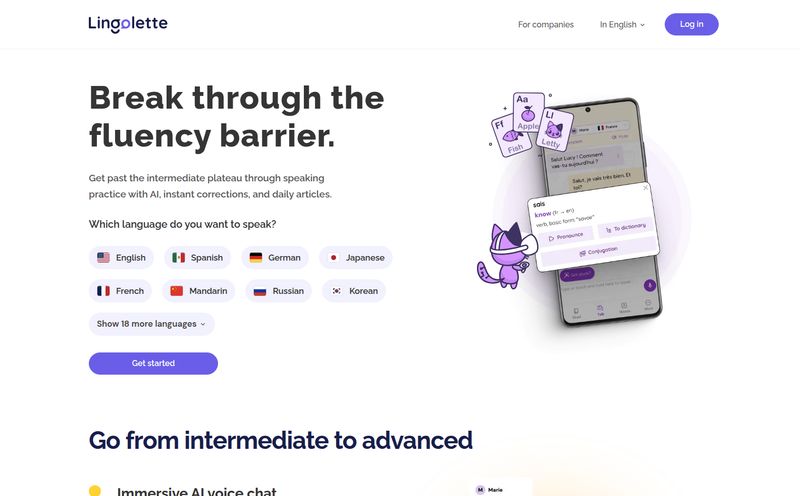For years, I’ve been in the digital marketing trenches, watching businesses wrestle with the hydra of customer communication. You’ve got emails here, support tickets there, social media DMs somewhere else, and maybe even phone calls logged in a dusty old spreadsheet. It’s a mess. We all know it. We've been trying to stitch it all together with a dozen different tools, and honestly, it usually just creates more problems.
Then along comes a platform like Seasalt.ai, talking about a “Conversation Experience Platform” with Generative AI. It sounds fancy, doesn't it? Almost too fancy. My inner cynic, honed by years of chasing algorithm updates and debunking marketing fluff, immediately perked up. So, I decided to take a look under the hood. Is this just another piece of shiny tech, or is it something that could genuinely change how businesses talk to their customers? Let's get into it.
So What on Earth is Seasalt.ai?
Forget the jargon for a second. At its heart, Seasalt.ai aims to be the central nervous system for every conversation your business has. Every. Single. One. We're talking text messages, voice calls, you name it. It's designed to capture, understand, and even help generate these interactions.
The secret sauce here is a combination of two powerful ingredients: Generative AI and Speech Recognition. It's not just a simple chatbot that follows a rigid script. No, the idea is that its AI can understand context, generate surprisingly human-like responses, and learn from past conversations. It’s like teaching a new team member how to handle customer queries, except this one can process information at a scale that's just… well, not human. It wants to make every interaction feel personal and, most importantly, lead to some kind of action.

Visit Seasalt.ai
The Features That Actually Move the Needle
A feature list is just a list until you see how it solves a real problem. Here's my breakdown of what Seasalt.ai brings to the table and why it might matter to you.
Generative AI that Goes Off-Script
Remember the early days of chatbots? Painful. You’d ask a simple question, and it would reply with “I’m sorry, I don’t understand.” Seasalt.ai’s generative AI is meant to be the antidote to that. By using large language models (the same kind of tech behind things like ChatGPT), it can create new, relevant responses on the fly. This means it can handle more complex queries, adapt its tone, and provide a much more natural-feeling conversation. For businesses, this opens up the possibility of automating more than just the simplest of FAQs.
Giving Your Business a Voice and Ears
This is a big one. The platform’s speech recognition and text-to-speech capabilities mean it’s built for the world of voice. Think about your call center. Instead of just recording calls for quality assurance later, a system like this can transcribe and analyze them in real-time. It can pick up on customer sentiment, identify keywords, and even guide a human agent with suggestions. It's about turning unstructured voice data into something you can actually work with. Pretty neat.
Seeing the Data Matrix with Real-Time Analytics
For a data nerd like me, this is gold. Having a conversation is one thing; learning from it is another. Seasalt.ai provides a dashboard with real-time analytics on all these interactions. What are your customers really asking about? Where are they getting frustrated? What are the common themes that pop up before someone cancels their subscription? Answering these questions used to require hours of manual work. A platform that surfaces these insights automatically is a powerful tool for any marketing or product team.
It Plays Well in the Sandbox
No tool is an island. I was glad to see integrations with major platforms like Twilio and even Discord. The Twilio connection is huge, as it’s the backbone of so many companies' communication stacks. The Discord integration is interesting—it suggests they're targeting modern, community-focused brands, not just traditional corporate call centers. This shows they understand that conversations happen in alot of different places today.
The Good, The Bad, and The AI
Okay, no tool is perfect. Let's get down to the brass tacks. Based on what I've seen and my experience with similar platforms, here's the honest breakdown.
| Why You Might Love It | Potential Hurdles to Consider |
|---|---|
| It's a comprehensive, all-in-one system for managing conversations. The potential for efficiency is massive. | This isn't a simple WordPress plugin. You'll likely need some technical chops or a dev team to get it set up and customized properly. |
| The generative AI can seriously upgrade personalization, making customers feel heard and understood. | The reliance on AI is a double-edged sword. Some interactions just need a real, empathetic human. Over-automation can backfire. |
| Actionable insights from real-time analytics can inform your entire business strategy, not just support. | The pricing isn't public, which usually means it's aimed at enterprise clients with bigger budgets. Not ideal for small businesses. |
I've worked with clients who would kill for a centralized system like this. They spend so much time and money trying to get their CRM to talk to their helpdesk, which won't talk to their phone system. A single platform that handles it all is incredibly appealing. However, the fear of losing the 'human touch' is real. Some might argue that AI can never replicate genuine empathy, and you know what? They're probably right. The trick is using AI to handle the repetitive stuff, freeing up your human team for the high-stakes, emotional conversations where they truly shine.
Who Is Seasalt.ai Really Built For?
After looking it over, I don't think this is a tool for everyone. If you're a solopreneur or a small business just starting out, this is likely overkill. You just dont have the volume of conversations to justify the complexity and probable cost.
But if you're a mid-to-large-sized company with a dedicated support team, a call center, or a high volume of daily customer interactions, then Seasalt.ai starts to make a lot of sense. Think SaaS companies, larger e-commerce stores, or any business where customer communication is a core operational function. You're the one who feels the pain of disconnected systems the most, and you're the one who stands to gain the most from the efficiency and insights it offers.
The Pricing Question Mark
Let's address the elephant in the room: the price. There isn’t one. At least, not a public one. The website funnels you toward the “Book a Demo” button, a classic sign of enterprise-level SaaS pricing. This means the cost is likely customized based on your usage, the features you need and the size of your company. It’s not necessarily a bad thing, but it means you can't just quickly compare it to other tools. You'll have to invest the time in a sales call to find out if it even fits your budget.
Frequently Asked Questions About Seasalt.ai
I've seen a few common questions pop up, so let's tackle them head-on.
1. What is Seasalt.ai in simple terms?
Think of it as a smart central hub for all your customer chats and calls. It uses AI to help you understand, manage, and even automate those conversations.
2. Does Seasalt.ai replace my customer support team?
No, and it shouldn't. It’s a tool to make your human team more efficient and effective. It can handle common questions and analyze data, freeing up your people to focus on complex problems that require a human touch.
3. Is Seasalt.ai good for a small business?
Probably not. Its features and custom pricing model suggest it's built for larger organizations with a high volume of customer interactions and the technical resources to implement it.
4. What kind of tools does it integrate with?
It integrates with key communication platforms like Twilio for voice and SMS, and even community platforms like Discord, which shows its versatility.
5. How does the generative AI work?
It uses advanced language models to understand the context of a conversation and generate new, human-like responses, rather than relying on a fixed script.
6. Where can I find Seasalt.ai pricing?
You can't find a public price list. You'll need to contact their sales team and book a demo to get a custom quote based on your company's needs.
Final Thoughts from the Trenches
So, is Seasalt.ai the real deal? I think for the right company, it absolutely could be. The idea of unifying voice and text conversations under one intelligent roof is powerful. The world of customer support and engagement is getting more complex, and platforms like this are a direct response to that complexity. It’s not a magic wand, though. It requires a clear strategy, some technical setup, and a willingness to rethink how you interact with your customers.
The future isn't about AI replacing humans. I truly believe that. It's about AI augmenting them. It's about letting the machines handle the data-crunching and repetitive tasks so that we, the people, can focus on what we do best: creativity, empathy, and building genuine connections.
Reference and Sources
- Seasalt.ai Official Website
- Twilio Communication APIs
- Discord Community Platform
- Gartner Magic Quadrant for Enterprise Conversational AI Platforms (for industry context)



